This is the third post in our Sea Slug of the Month series. Find tips for spotting nudibranchs in the intertidal zone at the end of this post!
Spanish Shawl nudibranchs
If you live your life in saturated color, this is the sea slug for you.
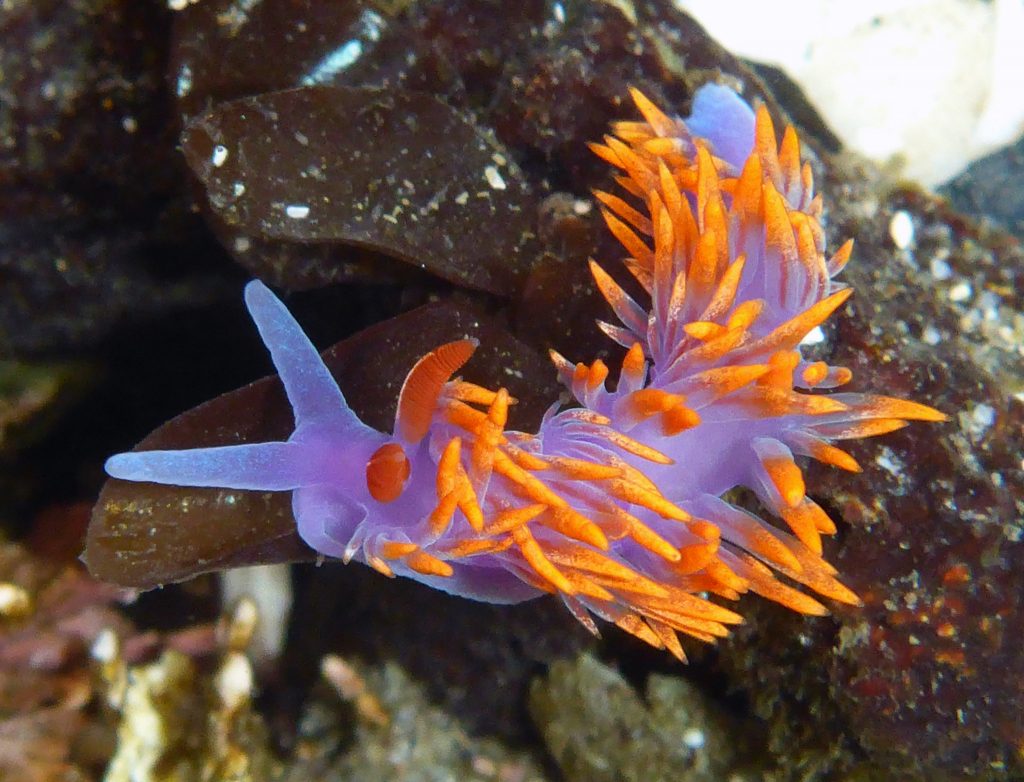
One of the great treasures of a few hours’ worth of tidepooling along the California Central Coast during the lowest tides of the season is the possibility of seeing multiple species of nudibranchs. Commonly called sea slugs, a term that includes many other families of molluscan cousins, nudibranchs are shell-less marine gastropods that lose their shells when they transition from their free-floating, planktonic larval stage to the adult stage we typically see.
One of the easiest nudibranchs to spot is the visually stunning Flabellinopsis iodinea, or Spanish Shawl nudibranch. They are locally common in the tidepools of Central California, and are also seen by divers. Its vivid purple body, flaming orange cerata, and large red rhinophores are a beacon of color among the comparatively subdued hues of the surrounding algae, sponges and hydrozoans of the tidepools. By nudibranch standards, this is also a relatively large, easy-to-see species, growing up to 70 mm in length in the right food-rich conditions.
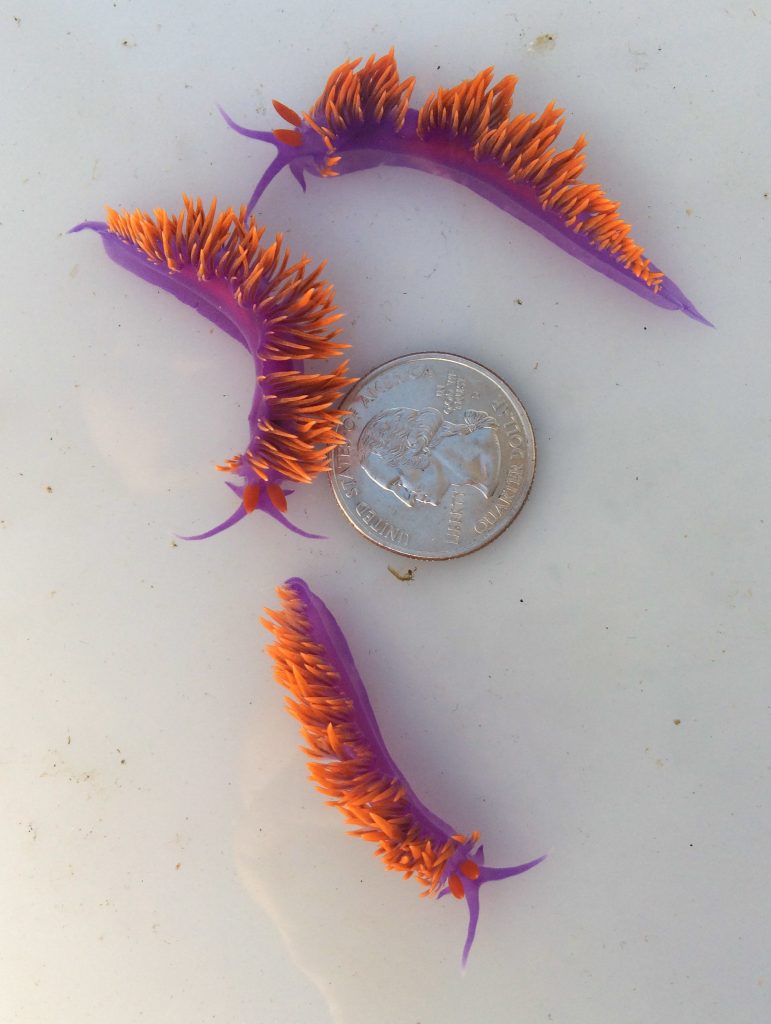
Their common name probably comes from their resemblance to a fringed shawl when they “swim”—a violent thrashing behavior used as a last resort to escape predators that forces them to abandon their food source and take their chances in the ocean currents.
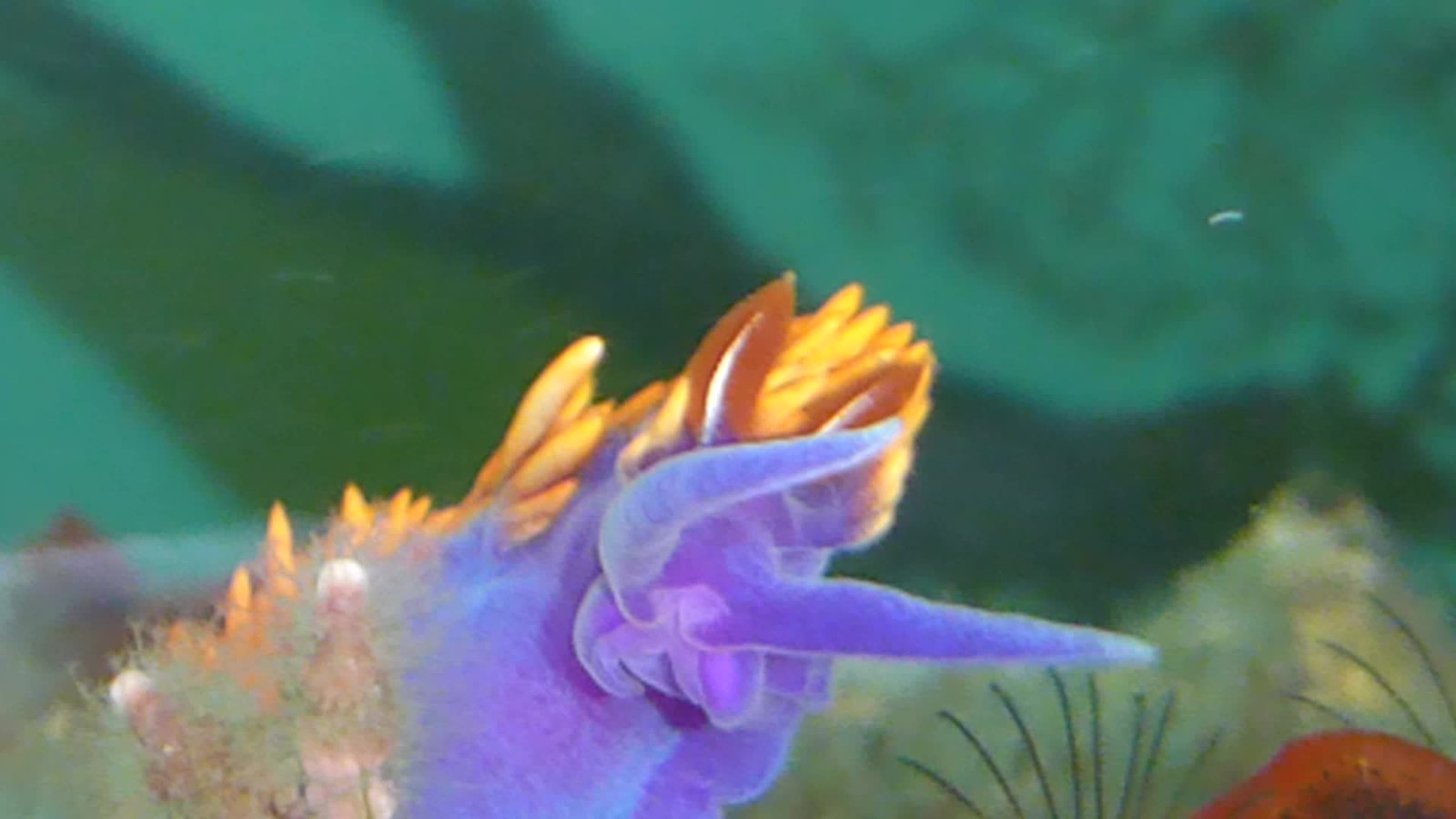
For the taxonomically curious, yes, in 2017 the genus name for Spanish Shawls underwent a scientific name change from Flabellina to Flabellinopsis.* As more research continues using the latest laboratory techniques, there will doubtless be additional changes ahead.
Like the Hermissenda opalescens discussed in the first blog of this series, Spanish Shawls are Aeolids. This clade of nudibranchs is distinguished by their ability to “steal” the defensive, stinging nematocysts of their hydrozoid prey and repurpose it through their digestive tract for their own defense. Those lovely bright orange cerata contain cnidosacs at their tips, which, when the nudibranch is attacked, can activate the nematocysts inside as if the predator had bitten on a mouthful of hydroid. The orange color of the Spanish Shawl cerata comes from a chemical in their preferred prey, Eudendrium hydroids, which have orange polyps.
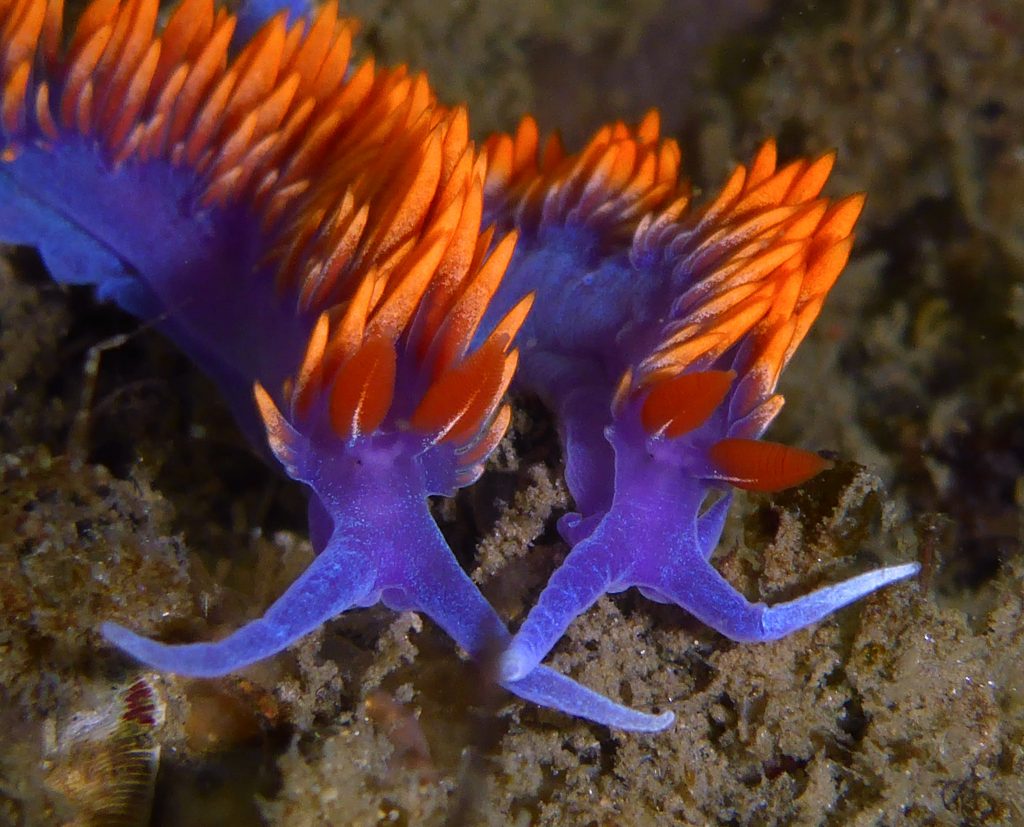
Spanish Shawls are picky: they only eat Eudendrium, and will soon die of starvation if they are moved away from these hydroids. Interestingly, the chemical that is responsible for the orange of the cerata, astaxanthin, is the same one responsible for the purple and red hues. Eudendrium hydroids—and therefore Spanish Shawls—are found in habitats with strong currents that deliver plenty of planktonic prey to their feeding polyps. Even the egg ribbons of the Spanish Shawl are bright orange from their Eudendrium diet.
This is one nudibranch you will identify instantly and not need Photoshop to enhance.
No Scuba, No Problem: Where to See a Nudibranch
Part 1: Intertidal
While we humans may think of nudibranchs as a tropical-paradise phenomena, requiring scuba gear and great luck to see, it may come as a surprise to learn that many of California’s nudibranchs also can be seen intertidally.
First, do your planning: Check your local tide table—there are apps for this—and pick a day and time coinciding with a minus tide (where the tide height is 0.0 or less). If you’re hoping to see a particular species of nudibranch, you can search online for locations where it has been seen by others using iNaturalist.org. For example, here’s a map of the search results for all 348 Opalescent Nudibranch (Hermissenda opalescens) observations in California, January-July 2019, seen by 126 different tidepoolers like yourself.
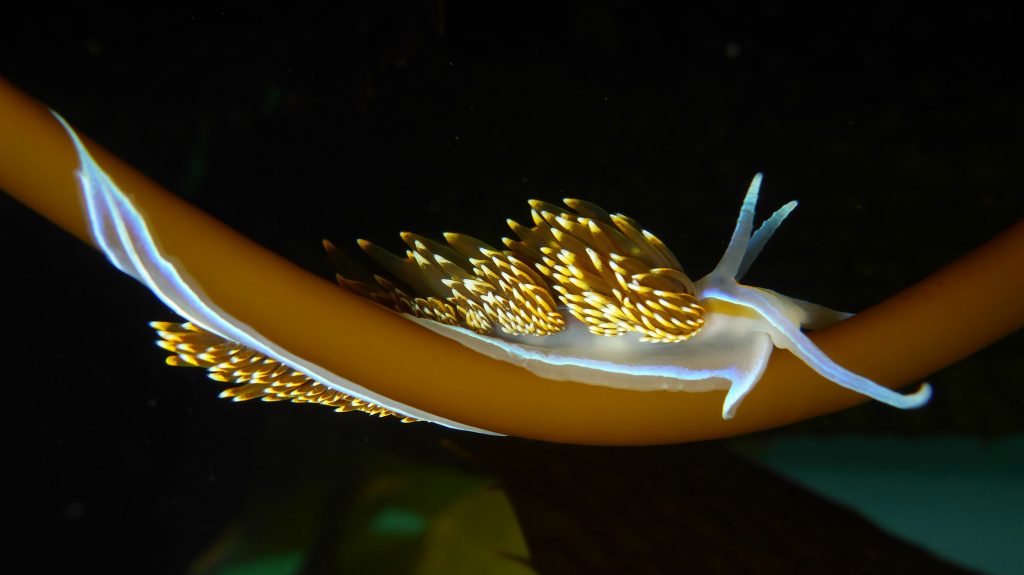
What to wear? The dress code is simple. Dress in warm layers and waterproof boots or old tennis shoes, making the fashion assumption that despite your best efforts, you possibly (probably) could get very, very wet. Flip-flops are a poor choice in most tidepool situations since they’re unstable, the water is cold, and there are a few ways you could get hurt: urchin spines, cranky crabs, and the sharp edges of mussels and barnacles can all result in blood-letting. Some folks prefer hip waders, but they aren’t necessary in most locations. A towel and a spare change of clothes is a pleasant luxury afterwards.
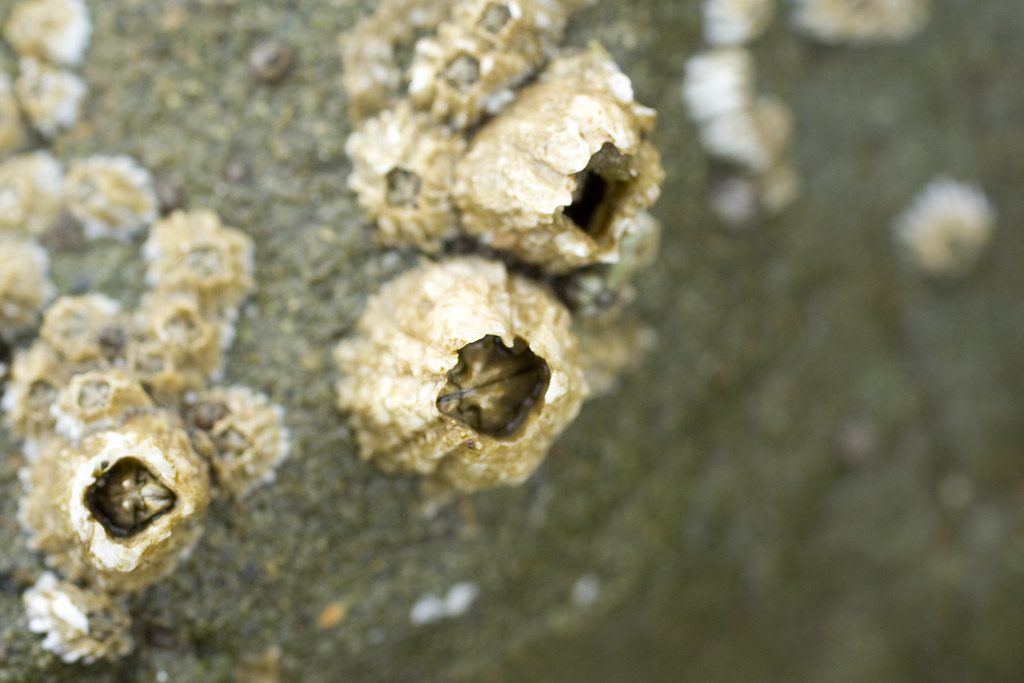
Head out to your chosen tidepools an hour or so before the lowest point to maximize your searching time. Depending on conditions, you could have up to about three hours of low-intertidal time if you plan it right. A word of caution: use common sense and don’t go out to the edge of the reef during high swells (this is checkable on weather/surf apps beforehand). And as you’re tidepooling, always make sure you always have a safe way to return to shore as the tide rises. It is easy to get distracted with all the beauty in our tidepools and find yourself cut off by a now-deep channel that was only a few inches deep when you crossed it an hour earlier.
With a few exceptions, nudibranchs are pretty tiny, so you aren’t going to find many if you stroll around the tidepools at a normal walking pace. Take your time to stop and look in a pool for a while, gently moving aside the various algaes to look under ledges and crevices where nudibranchs may hide at low tide. Another good technique is to look for nudibranch food sources (hydroids or sponges, depending on the species) or visible nudibranch egg masses, which look like tiny white spirals, whorls and fans.
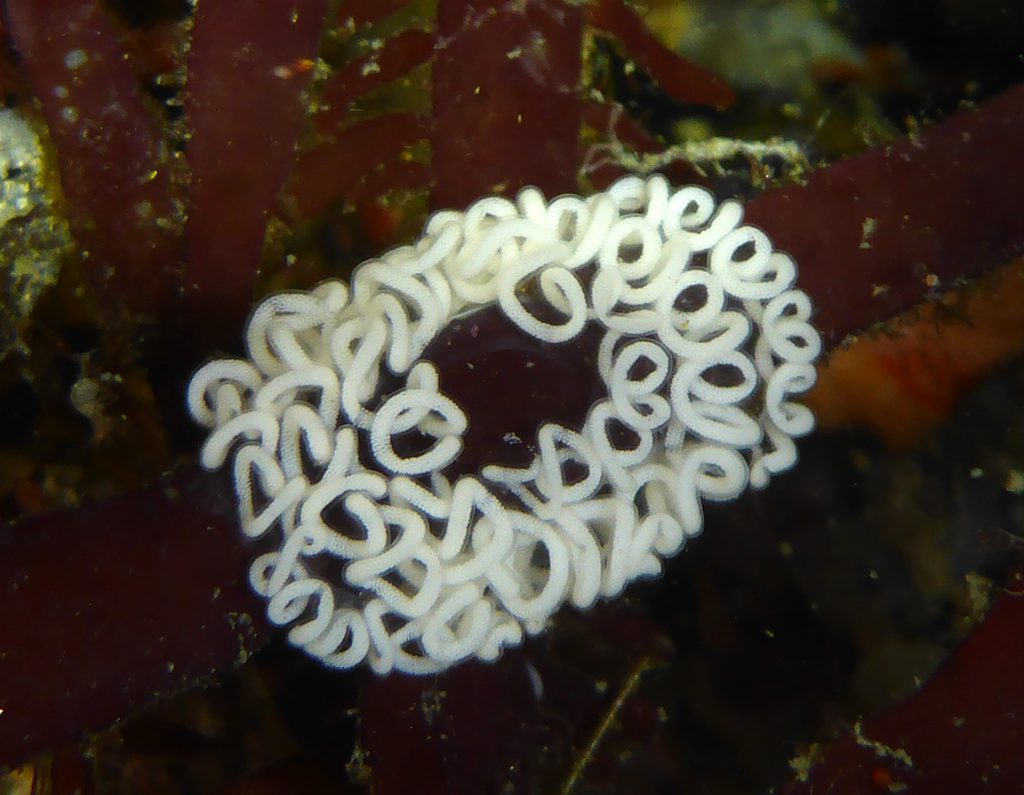
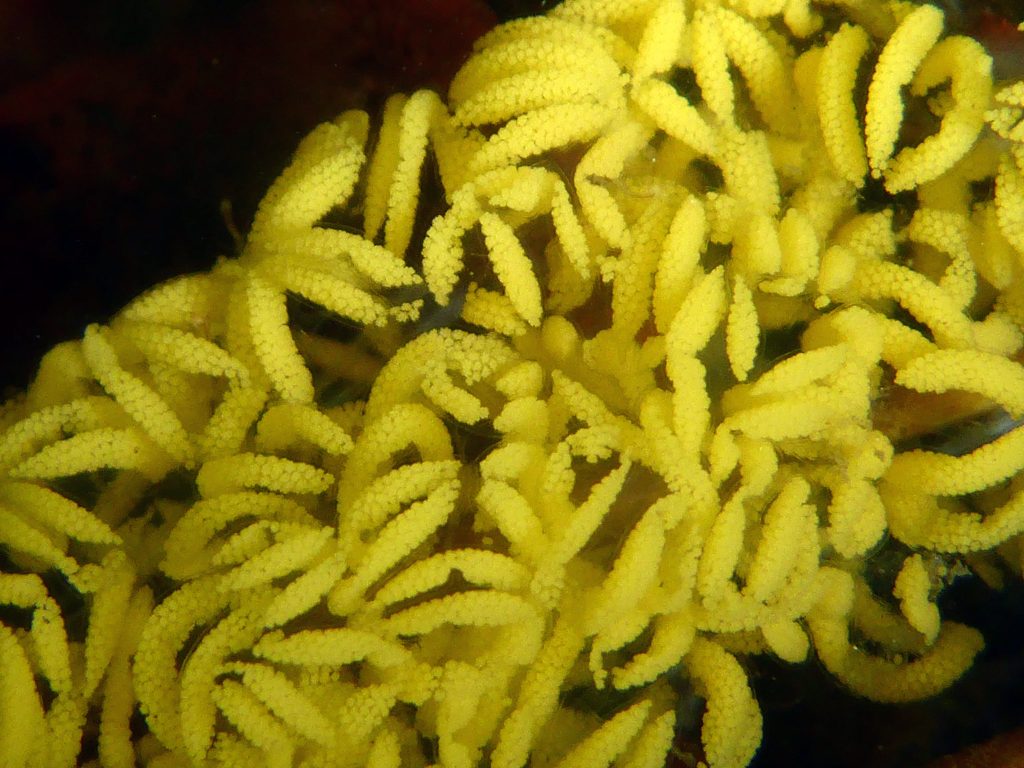
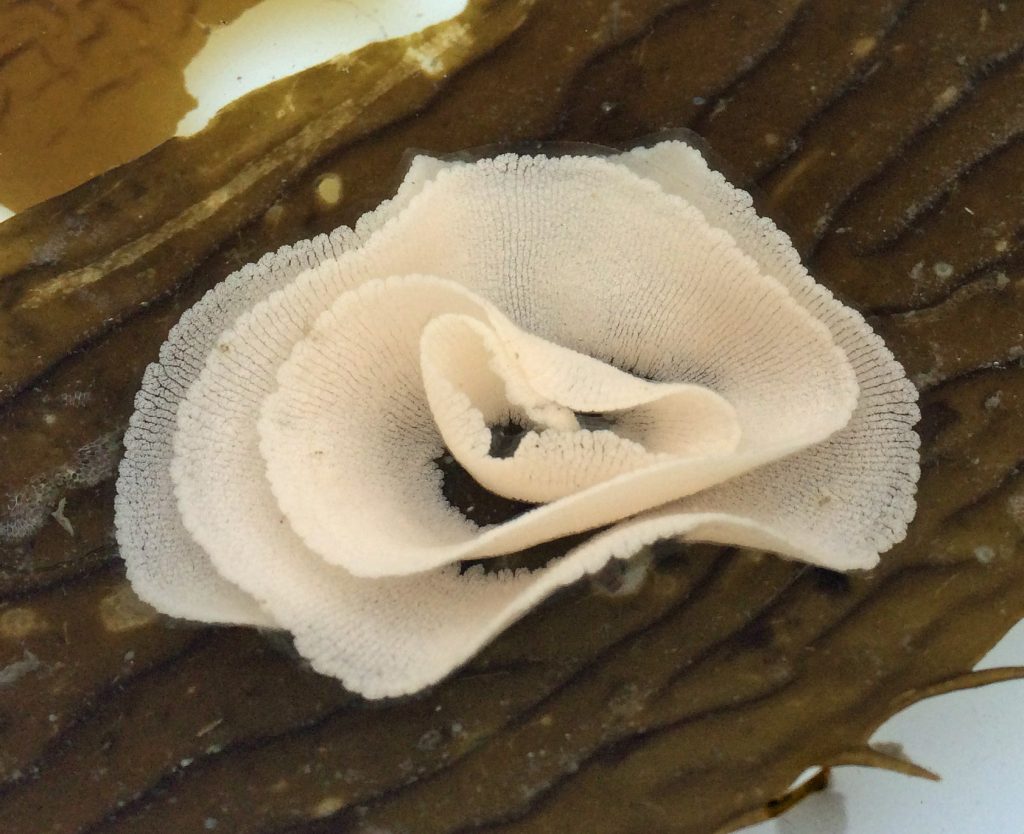
GO SLOW. Still not seeing any? GO EVEN SLOWER. YES, REALLY, REALLY SLOW. If you see one, yay, but resist the temptation to grab it; instead, follow good tidepooling etiquette and leave it where it is, next to the particular food source it requires to survive.
If you have a camera, try and snap a photo of the nudibranch in water so you can post it on iNaturalist yourself — to add to the knowledge base and log your findings.
What species of nudibranch is it? Check out this free Guide to California Nudibranchs. (Disclaimer: I’m a curator for this guide, and I try to keep the taxonomies up to date, so if you see any errors, let me know!) If you’re still stumped, post your photo to iNaturalist anyway and the software will likely identify it for you automatically. If not, or if you’re doubtful as to the suggested species, post your observation as simply a “Nudibranch” and an expert will come along and identify your photo for you.
Guest Author, Robin Agarwal
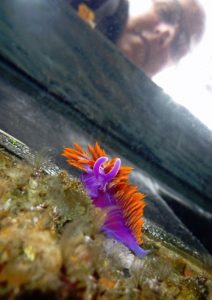
Lying flat on a bouncing floating dock underneath one of the biggest tourist-attraction piers in California, with my head and arms hanging over the side, I am frequently reminded of the kindness of fellow humans who think I’ve had a stroke or dropped my phone. No—just photographing sea slugs! I point, and show them a few photos on the back of my cheap underwater macro camera, and presto, another nudibranch enthusiast.
I was a tidepool kid who went astray and graduated with a liberal arts degree. In the last decade, I’ve returned to the tidepools and found a particular passion for photographing nudibranchs and other intertidal marine life. I’m co-editor of the California Sea Slugs Guide, and the Dock Fouling in California project on iNaturalist.org, where I have posted about 4,000 geotagged observations of nudibranchs, mostly along the Central California coast. Since I offer all my photos free to non-profit organizations (my way of thanking them for the work they do), you can find them all over the internet as well as Bay Nature magazine and NOAA National Marine Sanctuary informational signage. I’ve also been an enthusiastic contributor to a few scientific papers on nudibranchs, most recently Heterobranch Sea Slug Range Shifts in the Northeast Pacific Ocean Associated with the 2015-16 El Nino by Goddard et al. (2018).
Works Cited
*Korshunova, T.; Martynov, A.; Bakken, T.; Evertsen, J.; Fletcher, K.; Mudianta, W.; Saito, H.; Lundin, K.; Schrödl, M.; Picton, B. (2017). Polyphyly of the traditional family Flabellinidae affects a major group of Nudibranchia: aeolidacean taxonomic reassessment with descriptions of several new families, genera, and species (Mollusca, Gastropoda). ZooKeys. 717: 1-139., available online at https://zookeys.pensoft.net/articles.php?id=21885
Subscribe to our weekly blog to have posts like this delivered to your inbox each week.
Help us protect and restore the Morro Bay estuary!
- Donate to the Estuary Program today and support our work in the field, the lab, and beyond.
The Estuary Program is a 501(c)3 nonprofit. We depend on funding from grants and generous donors to continue our work. - Support us by purchasing estuary-themed gear from ESTERO. This locally owned and operated company donates 20% of proceeds from its Estuary clothing line and 100% of Estuary decal proceeds to the Estuary Program. Thank you, ESTERO!
- Purchase items from the the Estuary Program’s store on Zazzle. Zazzle prints and ships your items, and the Estuary Program receives 10% of the proceeds. Choose from mugs, hats, t-shirts, and even fanny packs (they’re back!) with our fun Estuary Octopus design, our classic Estuary Program logo, or our Mutts for the Bay logo.